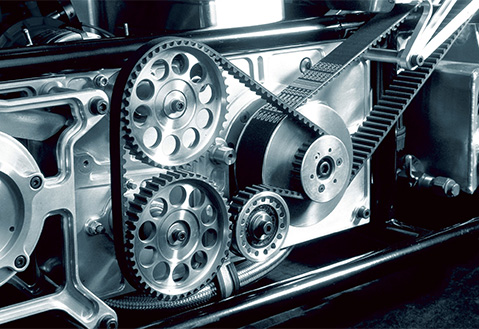- Arabic
- French
- Russian
- Spanish
- Portuguese
- Turkish
- Armenian
- English
- Albanian
- Amharic
- Azerbaijani
- Basque
- Belarusian
- Bengali
- Bosnian
- Bulgarian
- Catalan
- Cebuano
- Corsican
- Croatian
- Czech
- Danish
- Dutch
- Afrikaans
- Esperanto
- Estonian
- Finnish
- Frisian
- Galician
- Georgian
- German
- Greek
- Gujarati
- Haitian Creole
- hausa
- hawaiian
- Hebrew
- Hindi
- Miao
- Hungarian
- Icelandic
- igbo
- Indonesian
- irish
- Italian
- Japanese
- Javanese
- Kannada
- kazakh
- Khmer
- Rwandese
- Korean
- Kurdish
- Kyrgyz
- Lao
- Latin
- Latvian
- Lithuanian
- Luxembourgish
- Macedonian
- Malgashi
- Malay
- Malayalam
- Maltese
- Maori
- Marathi
- Mongolian
- Myanmar
- Nepali
- Norwegian
- Norwegian
- Occitan
- Pashto
- Persian
- Polish
- Punjabi
- Romanian
- Samoan
- Scottish Gaelic
- Serbian
- Sesotho
- Shona
- Sindhi
- Sinhala
- Slovak
- Slovenian
- Somali
- Sundanese
- Swahili
- Swedish
- Tagalog
- Tajik
- Tamil
- Tatar
- Telugu
- Thai
- Turkmen
- Ukrainian
- Urdu
- Uighur
- Uzbek
- Vietnamese
- Welsh
- Bantu
- Yiddish
- Yoruba
- Zulu
ئاب . 18, 2024 08:21 Back to list
Understanding the Benefits and Applications of Open End Timing Belts in Various Industries
Understanding Open-End Timing Belts Applications and Advantages
Timing belts are crucial components in many mechanical systems, playing a vital role in synchronizing the rotational speed and movement of various parts. Among the different types of timing belts, open-end timing belts stand out for their unique structure and application. This article will delve into the features, applications, and advantages of open-end timing belts.
What is an Open-End Timing Belt?
An open-end timing belt is a continuous loop of material that is designed with evenly distributed teeth along its inner surface. Unlike closed-loop belts, which are manufactured in a continuous circle, open-end timing belts can be tailored to specific lengths. This feature allows for flexibility in design and implementation, making them a preferred choice in numerous applications where precise timing and synchronization are paramount.
Key Features
1. Custom Lengths As the name suggests, one of the main features of open-end timing belts is their ability to be cut to custom lengths. This flexibility makes them ideal for systems with varying distances between pulley systems, which is common in complex machinery.
2. Material Variety Open-end timing belts can be made from various materials, including rubber, polyurethane, and reinforced compounds. This diversity allows for adaptability in different environmental conditions and load requirements, ensuring optimal performance.
3. Tooth Design The teeth on the inner surface of the belt are designed to engage smoothly with the corresponding grooves on the pulleys. This design minimizes slippage and optimizes power transmission, which is essential for maintaining the speed and positioning of connected components.
Applications
Open-end timing belts are commonly used across a broad spectrum of industries. Some notable applications include
- Automotive Industry In modern vehicles, timing belts are integral to engine timing systems. Open-end belts provide the flexibility to accommodate various engine configurations and enhance performance through precise timing.
open end timing belt

- Manufacturing In conveyor systems, open-end timing belts are used to transport materials efficiently
. Their ability to be customized in size helps in designing conveyors that fit specific operational requirements.- 3D Printing Many 3D printers utilize open-end timing belts for the movement of the print head and the build platform. The precision offered by these belts is crucial for ensuring the accuracy of printed objects.
- Robotics In robotic systems, various motion mechanisms rely on open-end timing belts to synchronize movements. Their adaptability to different dimensions makes them effective in building robotic arms and other automated tools.
Advantages of Open-End Timing Belts
1. Versatility One of the primary benefits of open-end timing belts is their versatility. They can be used in numerous applications and can be easily customized to meet specific design requirements.
2. Ease of Installation Open-end timing belts are typically easier to install and replace than their closed-loop counterparts, especially in systems that require quick maintenance or adjustments.
3. Cost-Effectiveness The ability to customize lengths reduces waste and allows manufacturers to optimize their designs, potentially lowering production costs.
4. Enhanced Performance Open-end timing belts provide reliable and efficient power transmission, reducing the risk of slippage. This efficiency is crucial for applications demanding high precision and reliability.
Conclusion
Open-end timing belts are an essential component in various mechanical systems, offering unique advantages that cater to diverse industrial needs. Their customizability, material versatility, and efficiency in power transmission underscore their importance in modern engineering and manufacturing processes. As technology continues to evolve, the role of open-end timing belts is likely to expand, driving innovation across multiple sectors. Whether in automotive design, manufacturing, or robotics, these belts remain fundamental to achieving precise and reliable operations.
-
Korean Auto Parts Timing Belt 24312-37500 For Hyundai/Kia
NewsMar.07,2025
-
7PK2300 90916-T2024 RIBBED BELT POLY V BELT PK BELT
NewsMar.07,2025
-
Chinese Auto Belt Factory 310-2M-22 For BMW/Mercedes-Benz
NewsMar.07,2025
-
Chinese Auto Belt Factory 310-2M-22 For BMW/Mercedes-Benz
NewsMar.07,2025
-
90916-02660 PK Belt 6PK1680 For Toyota
NewsMar.07,2025
-
drive belt serpentine belt
NewsMar.07,2025

